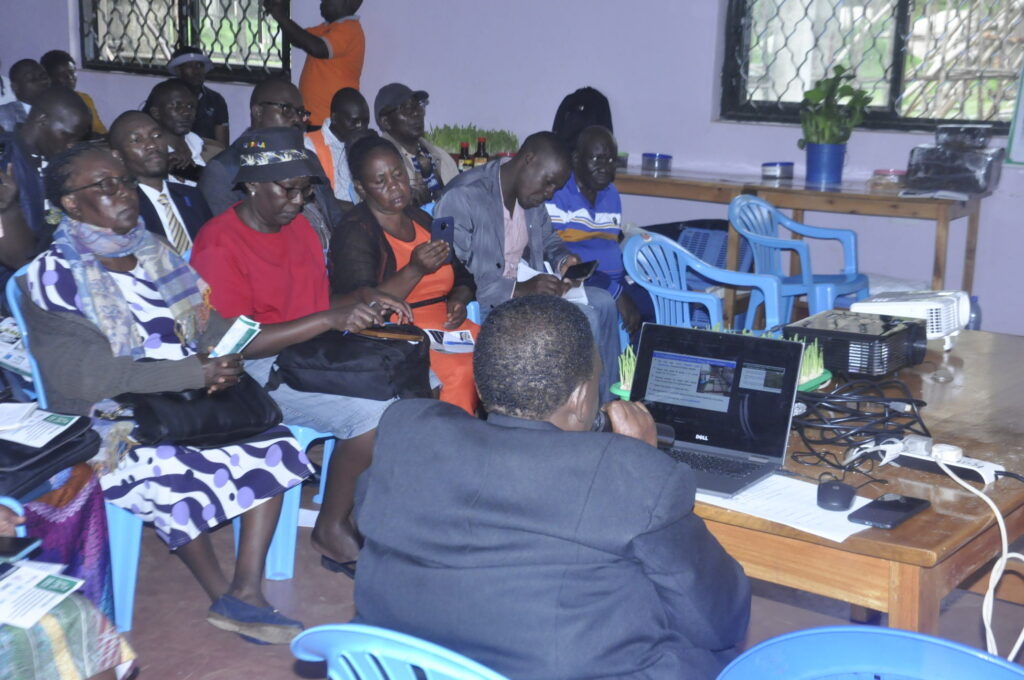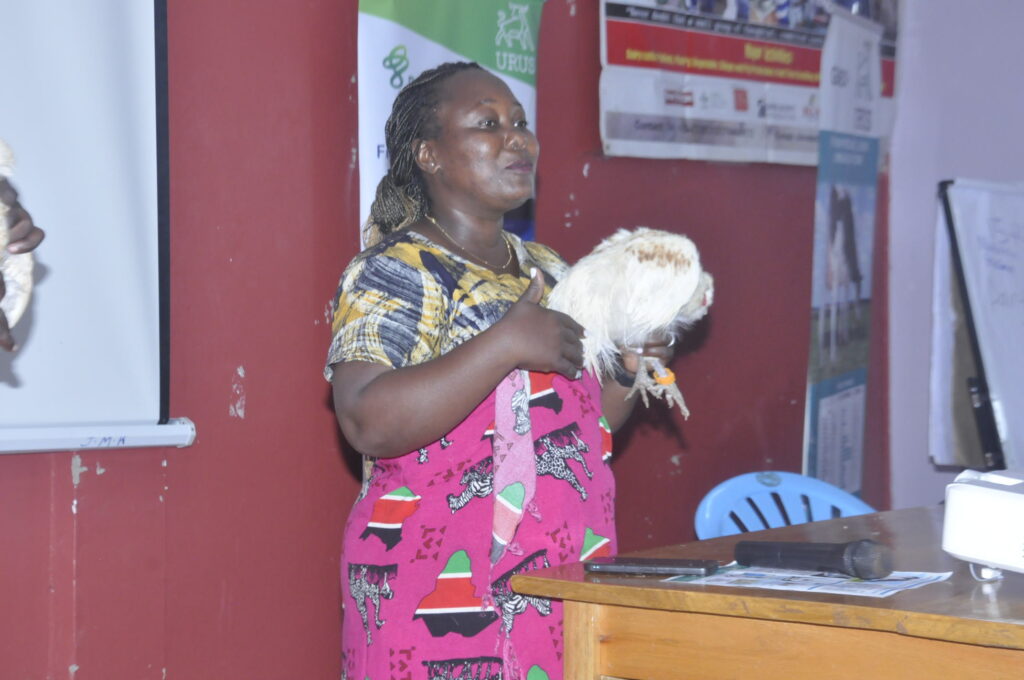By Joshua Kato
They came from all corners of the country. Over 100 of them, purposely to grow the women farmer`s agenda. This was during a berated woman`s day function, organised to honour women farmers. “I have organised this training every March for the last ten years in honour of women farmers across the country,” Kabirizi said. She said that the other objective is to help her share her vast knowledge in agriculture with fellow women.
The training was graced by over 180 farmers from across the country. To fit into the theme of the day, three of the four trainers were female. These included Dr Jolly Kabirizi who handled urban livestock feeding using common ‘waste’, Doris Karungi who handled indigenous and ornamental poultry and Margaret Ssentambi who handled ‘soilless’ farming. The only male facilitator was Dr William Kabanda from URUS.
50 dairy farming instructional books were also given to 50 women, thanks to Pride Micro-Finance. The book, was written by Dr Jolly Kabirizi. Kabirizi told the farmers that throughout her 40-year research work at the National Livestock Resources Research Institute (NaLIRRI) and her several studies, she fronted women farmers. “I did so many studies across the country and in most of them I used women. This was of course intended to help them grow in the farming sector,” she said. Adding; “I am happy that more women are joining commercial agriculture,”
Innovate or perish
“There is no way you can grow as a farmer, without innovating,” Bob Paul Lusembo, Head of Savings and E-business told the farmers. All the trainers emphasized the importance of innovation. “This must cut across the board including in feeding and nutrition of the animals, selection of breeds or varieties, selection of crops and even marketing of the final product. For example, livestock farmers were told that they can use ‘waste’ to feed their flock and reduce the cost of production,” he said.
Turn waste into feeds
According to Dr Jolly Kabirizi, over 40% of the garbage collected from urban markets are agricultural wastes. Three quarters of the garbage rots uncollected on pavements, streets, sewerage outlets and water channels. This unfortunate tragedy is witnessed especially in markets, blurring the city’s image and posing a serious health danger.
And yet, according to Kabirizi, for small-scale urban dairy cattle farmers, the high-grade conventional feed resources such as Napier grass is quite expensive to get and also less available. It is therefore necessary to increase the availability of alternative feed resources for cattle. Therefore, producing feed resources from ensiled banana peels that contain valuable nutrients like glucose is important as alternative feed resources, especially for resolving scarcity of feed resources. Ensiling banana peels with sweet potato vines and/or maize stover and agro-industrial wastes such as molasses has an appreciable level of nutrient and can be adopted in urban dairy cattle or pig feeding systems.
“Most of these agricultural wastes have high nutrient levels of Nitrogen, Potassium, and Phosphorus. Such wastes can be processed and converted into high quality livestock (cattle, goats, rabbits and pig) feeds,” Kabirizi told the farmers.
She explained that this alternate method of utilisation of agricultural wastes by livestock farmers can reduce the rate of accumulation, with subsequent reduction on environmental pollution thus improving environmental health, livestock productivity and household income. Kabirizi showed how farmers can use banana peels, pumpkin peels, maize stovers, sweet potato vains, brewers waste, pineapple waste, hydroponic maize to feed livestock.

Good breed, good care
Dr. William Kabanda the central region manager at URUS, explained to the farmers that breed selection, good nutrition and general management must go hand in hand to sustain productivity at the farm
“Although you have the best genetics, without enough quality feed and water your animals will not produce milk because it is their bodies that produce milk and without feeds, they will be eating their bodies to produce milk. Here you will end up losing the milk and the cow itself,” she said.
He advised that farmers must keep the animals healthy because unhealthy animals will not be able to produce. It also causes abortions and failure to conceive which deprive you of the milk you would be getting and a heifer.
“If you are doing dairy as a business, you need to understand that, for every day a cow is on your farm but doesn’t produce milk, it costs you between US$2-5 (sh7, 200 and sh18, 000) in labour, water, feed and shelter. In a month, you will have lost between shs216, 000 and sh540, 000,” he says.

Good cows deliver each year
He explains that with better management, each of your cows should give you a calf every year. This is because a cow should be given two months of voluntary waiting period to help her regain its body shape, the uterus to get back to its proper position, clean up its body and get ready to conceive again.
“Please don’t serve your cow before at least 50 days after calving even if it came on heat because it hasn’t gained its shape to carry a calf and produce milk,” he said.
Using the example of how a man must care for his wife, Kabanda said that dairy cattle must be given the same care. “If you are thinking of having heavy milkers that can give you 30 litres and above, they should drink over 200 litres of water in intervals (10-15 times a day). This therefore, means you must avail water all the time for it to drink. Also provide it with a comfortable shelter for it to relax as a cow needs 14-15 hours of relaxation each day for the body to make milk.
Hanifah Namubiru, one of the farmers who attended the training said that she had learnt a lot from fellow women. “When you meet fellow farmers, there is always something that you take away from them,” she said.





